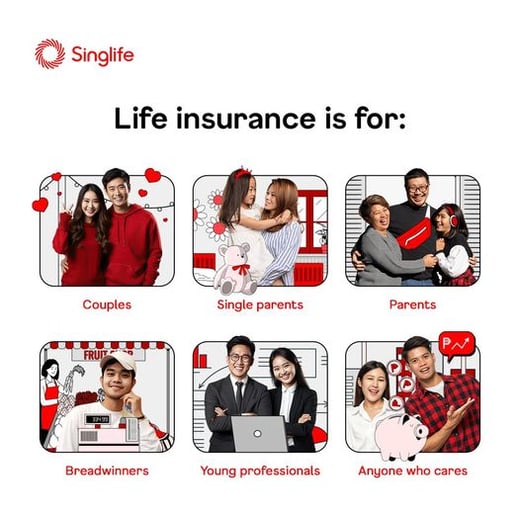Insurance coverage remains alarmingly low in the Philippines—a nation renowned for its resilience in the face of adversity. With an insurance penetration rate of just 1.75%, one of the lowest in the world, most Filipinos are left vulnerable to financial turmoil when unexpected events strike.
This startling statistic reveals a critical gap in the financial safety net for millions of Filipinos. Without insurance, families risk depleting their savings during medical emergencies, compromising their ability to invest in their children’s education or secure a comfortable retirement. This absence of financial buffers exposes individuals and families to economic hardships that could have been mitigated through adequate insurance coverage.
Low insurance penetration also has broader implications for the country’s economic resilience. In times of crisis, a well-insured population can recover more swiftly, contributing to overall economic stability and growth. Increased insurance adoption empowers individuals to take calculated risks, innovate, and invest in their futures, ultimately driving national prosperity.
Addressing the challenges of low insurance penetration in the Philippines is essential for enhancing the financial security of its citizens and unlocking the country’s economic potential. By understanding the barriers to adoption and exploring growth opportunities, insurers can transform the market and extend the promise of always listening and understanding to millions more Filipinos.
Understanding the Challenges Insurance Brands Face in the Philippines
The Philippines’ insurance industry faces significant challenges that present unique obstacles insurers must navigate to increase adoption and expand coverage.
Cultural and Societal Barriers
- Lack of Awareness and Understanding of Insurance Benefits
Many Filipinos lack a clear understanding of insurance’s benefits and importance, viewing it as an unnecessary cost rather than a valuable financial tool. This misconception often stems from inadequate financial literacy education. To change this narrative, insurers must emphasise insurance as a key component of a robust financial safety net.
- Traditional Reliance on Community Support and Informal Safety Nets
Filipino culture strongly emphasises community and family support during crises. This reliance can serve as an informal safety net, reducing the perceived need for formal insurance coverage. Many believe they can depend on family, friends, or community organisations for emergency assistance, making insurance seem redundant.
Economic Factors
- High Poverty Rates Limit Disposable Income for Insurance Purchases
Economic constraints significantly impact insurance adoption. With a large portion of the population living below the poverty line, many Filipinos have limited disposable income to allocate toward insurance premiums. For these individuals, daily necessities take priority over long-term financial planning, posing a substantial challenge for insurance brands trying to reach and serve low-income segments.
- Limited Access to Affordable Insurance Products
The lack of affordable insurance products further exacerbates the issue. Many offerings are not tailored to the financial capacities of lower-income individuals, creating a mismatch between product offerings and consumer needs. Potential customers are left without viable pathways to obtain insurance coverage without affordable options, limiting market penetration.
Regulatory and Market Constraints
- Complex Regulatory Environment and Compliance Challenges
The regulatory landscape presents another layer of complexity for insurance providers. Compliance with stringent regulations can be challenging, particularly for smaller companies or new entrants. This environment can slow innovation and adaptation, making it difficult for insurers to respond swiftly to market needs or introduce new products.
- Lack of Innovation in Product Offerings and Distribution Channels
The insurance market traditionally lacks innovation in product offerings and distribution channels. Many products have remained unchanged over time, failing to meet the evolving needs of modern Filipino consumers. Traditional distribution methods, such as face-to-face sales, may not effectively reach younger, tech-savvy consumers who prefer digital interactions.
Opportunities for Growth in the Philippines Insurance Sector
Despite these challenges, the insurance sector in the Philippines has significant growth potential, driven by digital transformation and a massive young population. The Philippines currently has the largest number of young people in its history, with 30 million individuals between the ages of 10 and 24, accounting for 28% of the Philippine population. By tapping into these opportunities, insurance brands can expand their reach and enhance financial security for millions of Filipinos.
Digital Transformation and Internet Usage
The Philippines ranks among the top countries globally in internet usage, with a large portion of the population actively engaging with digital platforms and mobile apps. According to Statista, the internet penetration rate in the Philippines was 73.6% of the total population at the beginning of 2024. This connectivity presents a substantial opportunity for insurers to leverage digital channels for education, distribution, and customer engagement.
- Digital Platforms and Mobile Apps: Insurers can simplify insurance purchasing through digital platforms, making it more accessible and convenient for consumers. Mobile apps can facilitate real-time communication, policy management, and claims processing, providing a seamless experience for users.
Singlife’s partnership with GCash exemplifies the potential of digital platforms in increasing insurance accessibility. By integrating insurance products into the GCash app, Singlife has reached millions of users, offering affordable and customisable insurance solutions. This approach has successfully expanded coverage to underserved markets, demonstrating the power of digital integration in the insurance sector.
Engaging the Youth Demographic
The country boasts a significant young population eager for financial literacy and empowerment. This demographic of young buyers in the Philippines is tech-savvy and open to digital solutions, making them an ideal target for innovative insurance products.
- Financial Literacy and Education: Insurers can develop targeted educational campaigns to raise awareness among young consumers about the importance of insurance. By partnering with educational institutions and using digital platforms, insurance brands can effectively engage this demographic and foster a culture of financial planning and risk management.
- Digital-Native Insurance Products: To appeal to younger consumers, insurers can offer digital-native products aligning with their preferences and lifestyles. Products such as pay-per-use insurance, microinsurance, and gamified financial wellness programs can capture the interest of young Filipinos and encourage them to invest in insurance coverage.
The Role of Customer-Centricity — A Game-changer for Insurance Companies in the Philippines
Insurers can drive greater adoption and loyalty by focusing on customer needs and enhancing their experience. Here are the key aspects of embracing customer-centricity:
Enhancing Customer Experience
- Understanding Customer Needs and Preferences
Insurers must gain a deep understanding of customer needs and preferences to effectively serve the diverse Filipino market. This involves conducting market research to identify consumer segments’ pain points, expectations, and financial goals. Insurers can use data analytics to tailor products and services that resonate with their target audience. Sun Life Philippines has invested in customer insights and analytics to better understand client needs and has developed targeted solutions and improved service offerings.
- Personalisation of Insurance Products
Personalisation is key to meeting the diverse needs of Filipino consumers. Insurers can design products catering to different life stages, income levels, and risk profiles. Companies can address each customer’s unique circumstances by offering customisable policies, such as pay-per-use insurance or microinsurance. AXA Philippines introduced its customisable health insurance product, Health Max, allowing customers to choose from various coverage options based on their needs and budget. This flexibility enhances customer satisfaction and engagement.
Building Trust and Transparency
Building trust is crucial for increasing insurance penetration. Insurers must prioritise clear and honest communication, simplifying complex terms and conditions to ensure understanding. Educational initiatives like workshops and online resources can also help demystify insurance concepts and build consumer confidence. Manulife Philippines launched a financial literacy program to educate Filipinos about the importance of financial planning and insurance. By partnering with local organisations and schools, Manulife has reached thousands of individuals, fostering trust and awareness of insurance benefits.
Leveraging Technology to Provide Seamless and Transparent Insurance Processes
Technology can enhance transparency and streamline the insurance process. Digital platforms and mobile apps can offer customers a seamless experience, from policy purchases to claims processing. By leveraging technology, insurers can provide real-time updates, easy access to policy information, and quick support, improving customer satisfaction and trust. Philam Life, in collaboration with AIA, has launched the “Vitality” program, which rewards customers for maintaining a healthy lifestyle. This program uses wearable technology to track physical activity and offers incentives for healthy behaviour, aligning insurance products with the wellness trend.
Driving Product Innovation
Innovative Insurance Product Offerings to Meet Diverse Needs
Product innovation is crucial for attracting new customers and addressing the diverse needs of the Filipino market. Insurers can develop new products and solutions that cater to specific consumer segments, such as young professionals, gig workers, and rural populations. Insular Life has introduced the “InLife Sheroes” program, a suite of insurance products and services designed specifically for women. This innovative approach addresses the unique needs of female customers and empowers women by providing financial literacy resources and support.
Case Studies of Successful Insurance Companies in the Philippines
Case Study: Singlife and GCash Partnership

Image credit: Singlife Philippines Facebook
Background
Singlife is a digital life insurance company established in Singapore expanding its reach in the Philippines through innovative strategies to address the country’s low insurance penetration. Recognising the potential of digital platforms, Singlife partnered with GCash, the leading e-wallet service in the Philippines, with over 75 million users as of December 2023.
Approach
Singlife utilised its partnership with GCash to embed insurance products within the e-wallet platform, providing Filipinos with easy access to affordable life insurance.
- Digital Integration: Singlife integrated its products into the GCash app, allowing users to purchase and manage insurance policies directly from their mobile devices. This digital-first approach simplified the process, making it more accessible for the average consumer.
- Product Innovation: Singlife introduced embedded insurance products like the Cash for Goals plan and the 100-in-1 Medical Plan, which offer flexible coverage options tailored to individual lifestyles and budgets.
Outcomes
By leveraging GCash’s extensive user base and digital capabilities, Singlife was able to offer customisable insurance products to meet the daily needs of Filipino consumers. This partnership simplified the customer journey and ensured a seamless digital experience.
- Increased Reach: The integration of Singlife’s products into GCash has expanded its customer base, reaching millions of Filipinos who previously lacked access to insurance.
- Customer Engagement: The digital platform has improved customer engagement by offering a convenient and transparent insurance experience, leading to higher adoption rates and customer satisfaction.
Case Study: Pioneer in Microinsurance
Background
Pioneer Insurance is a leading insurance provider in the Philippines, known for its focus on microinsurance products designed to serve low-income Filipinos. The company has been instrumental in promoting financial inclusion by providing affordable insurance solutions to vulnerable populations.
Approach
Pioneer Insurance has partnered with cooperatives, local organisations, and non-governmental organisations (NGOs) to expand its reach and provide microinsurance products to communities across the Philippines. These partnerships enable Pioneer to leverage existing networks and deliver insurance solutions tailored to the specific needs of low-income individuals.
- Collaborative Partnerships: Pioneer works closely with cooperatives and NGOs to offer microinsurance products, ensuring they are accessible to those in need. These collaborations help Pioneer understand community needs and design products to address common risks.
- Product Offerings: Pioneer offers a range of microinsurance products covering risks such as accidental death, injury, and property damage. These products are priced affordably, making them accessible to low-income households.
Outcomes
Pioneer Insurance’s focus on microinsurance has led to significant progress in increasing insurance coverage among low-income Filipinos. By working with local partners and offering tailored products, Pioneer has successfully provided financial protection to millions of previously uninsured individuals.
- Expanded Coverage: Through its partnerships, Pioneer has reached millions of Filipinos, providing them with essential insurance coverage to mitigate financial risks.
- Empowered Communities: The availability of microinsurance has empowered low-income individuals by offering them a financial safety net, reducing their vulnerability to economic shocks and enhancing their resilience.
Strategic Recommendations for Insurance Brands in the Philippines
To address the challenges and capitalise on the opportunities within the Philippine insurance market, insurers must adopt strategic approaches that leverage technology, innovate product offerings, and foster public-private partnerships. These strategies can significantly enhance insurance penetration and provide Filipinos with the financial protection they need.
Leveraging Technology for Distribution
Technology offers insurers a transformative opportunity to expand their reach and improve operational efficiency. By embracing digital channels, insurers can connect with a broader audience while reducing costs associated with traditional distribution methods.
- Expanding Reach: Digital channels, such as mobile apps, online platforms, and social media, enable insurers to reach consumers in remote and underserved areas. By using targeted digital marketing strategies, insurers can effectively communicate with potential customers who may not have access to physical branches.
- Cost Reduction: Implementing technology-driven solutions, such as automated customer service and digital underwriting processes, can reduce operational costs and streamline the customer journey. This efficiency allows insurers to offer more competitive pricing and enhance customer satisfaction.
Innovating Product Offerings
Innovation in product design is crucial to meeting the diverse needs of the Filipino market, particularly low-income segments that may find traditional insurance products unaffordable.
- Microinsurance Models: Developing microinsurance products offering basic coverage at affordable premiums can attract low-income individuals who may otherwise be excluded from the insurance market. These products can cover essential risks, such as health emergencies and property damage, providing a financial safety net for vulnerable populations.
- Pay-Per-Use Insurance: Introducing pay-per-use models, where customers pay premiums based on actual usage or risk exposure, can appeal to cost-conscious consumers. This flexible approach allows individuals to tailor coverage to their needs and financial circumstances, making insurance more accessible and appealing.
Public-Private Partnerships
Collaborations between government entities, insurers, and technology companies are essential for driving awareness and adoption of insurance products across the Philippines.
- Government Initiatives: Government support in the form of regulatory reforms and public awareness campaigns can facilitate the growth of the insurance sector. Initiatives to promote financial literacy and educate citizens about insurance benefits can increase consumer confidence and demand.
- Tech Collaborations: Partnering with technology firms can enhance insurers’ capabilities in data analytics, customer engagement, and product innovation. These collaborations can lead to developing advanced insurance solutions responsive to consumer needs and market trends.
By implementing these strategic recommendations, insurers can significantly improve their market position and contribute to increasing financial inclusion in the Philippines. These efforts will ensure more Filipinos have access to the financial protection they need to safeguard their futures.
Final Thoughts: The Path Forward
The Philippine insurance sector faces significant challenges, including cultural barriers, economic constraints, and regulatory complexities, but also holds substantial opportunities for growth through digital transformation and engaging the youth demographic. Increasing insurance penetration can enhance financial security for individuals and bolster the country’s economic resilience.
Industry leaders must prioritise innovation and customer-centricity to realise the potential of the insurance market in the Philippines. By listening to and understanding the needs of their customers, insurers can develop tailored solutions that resonate with the Filipino population. Embracing technology and forging strategic partnerships will be key to expanding coverage and ensuring more Filipinos feel secure, always listening and understanding their customers’ unique needs.




